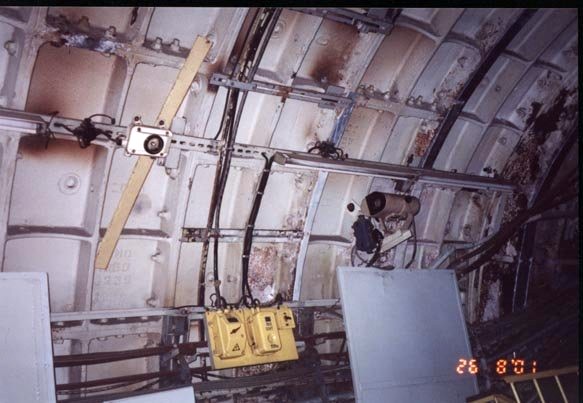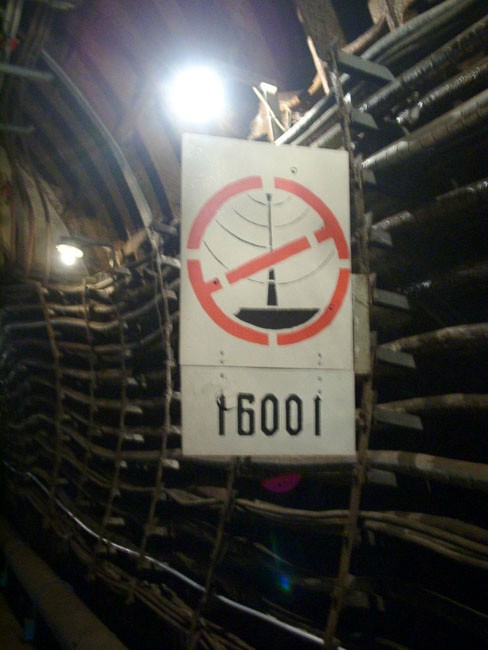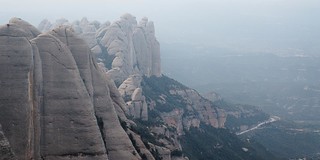D-6: the images of a mysterious metro network that runs through Moscow at great depth
The Moscow metro is world famous for its beautiful stations, but the existence of a parallel and secret metro network is much less well known.
A secret metro network whose construction began in the Stalin dictatorship
The construction of this secret metro network would have been started in the 1950s, during the Stalin dictatorship, after the start of the Cold War. Its code name would be Д-6 (D-6), although it is informally known as Метро-2 (Metro-2). For decades the very existence of this metro network was a mystery, and was often dismissed as a mere urban legend. It was speculated that it would travel deeper into the city's subsoil than the conventional metro lines, around 50 and 200 meters below the streets.

The first official information about that network came from the United States
But what sense would it make to build a second secret metro network? Various reports have indicated that it could have served as a refuge for the elite of the Soviet dictatorship and also to communicate the Kremlin with other areas of Moscow in the event of war. The first official document to address the existence of that mysterious metro network did not emerge from the USSR or Russia, but from a US Department of Defense report entitled "Military Forces in Transition", published in 1991, which stated the following:
"The Soviets have constructed deep-underground both in urban Moscow and outside the city. These facilities are interconnected by a network of deep interconnected subway lines that provide a quick and secure means of evacuation for the leadership. The leadership can move from their peacetime offices through concealed entryways in protective quarters beneath the city. There are important deep-underground command posts in the Moscow area, one located at the Kremlin. Soviet press has noted the presence of an enormous underground leadership bunker adjacent to Moscow State University. These facilities are intended for the national command authority in wartime. They are estimated to be between 200 m (660 ft) and 300 m (980 ft) deep, and can accommodate an estimated 10,000 people. A special subway line runs from some points in Moscow and possibly to the VIP terminal at Vnukovo Airfield."

What Russian sources say about the D-6 metro network
In May 2004 Vladimir Shevchenko, former adviser to Mikhail Gorbachev, Boris Yeltsin and Vladimir Putin, was the first senior Russian official to acknowledge the existence of a secret metro line, but downplayed its importance: "Reports on the number of underground communications are greatly exaggerated. In the days of Stalin, who greatly feared assassination attempts, there was in fact a single-track underground railway line that ran from the Kremlin to his so-called "Near Dacha" in Volynskoye. Today neither the Dacha nor the metro line are in use today. In addition, underground transport links existed between the General Staff and various other government facilities."

In March 2007, the official Russian agency Tass spoke openly about Metro-2 in the last paragraph of a news item that talked about a new mapping of the Moscow metro, and pointed out that the secret network was controlled by the FSB, the Russian intelligence service, successor to the famous Soviet KGB. The story was later deleted, but two copies remain: one in Web Archive and other on 1Prime.ru:
"Another interesting thing about the "underground map" is whether the route of the secret "metro-2" will be officially declassified, the existence of which is no longer denied even by responsible officials. The unofficial maps of the " Government Subway" have been around for quite some time, and anyone can find them on the Internet if they want. If you believe them, this system connects the center of Moscow with Barvikha, the government pension "Bor", the government airport Vnukovo-2 and the village of Zarya. There are more and more proposals to use these lines for relieve the transport system of Moscow. Metro-2 lines were in the department of the KGB for a long time, and then came under the wing of the FSB. The director of the Moscow Metro, Dmitry Gaev, agreed in principle with the idea of using secret tunnels to transport passengers. But, as he pointed out, the decision in this regard must be made by the organization in whose equilibrium these objects are located."

In March 2007, Mikhail Poltoranin, who was a minister under Boris Yeltsin from 1990 to 1992, stated the following about the D-6: "It is an extensive network of tunnels and an emergency command center in case of war, from where you can direct the nuclear forces of the country. It can hide a lot of people, its maintenance was necessary. I know that the "Metro-2" has branches that go to the outskirts so that the command moves away from the epicenter of a nuclear attack".

In October 2008, a spokeswoman for the Moscow metro, Svetlana Razina, stated: "Several years ago, among the drivers at the Izmailovo depot there was a recruitment for a service on secret routes, and although there were many willing, they had to select only one. Enter by the middle of these tunnels is only for people with special authorization. Most of the time, these branches used very short trains, consisting of a battery electric locomotive and a passenger car."

A series of photos of the D-6 published by a Russian site in 2012
The supposed photos of that secret subway network that you see in this entry have been compiled by the wiki nashtransport.ru, specialized in Russian transport issues and has an entry about the D-6 network. The photos were published in that entry in 2012. It states the following: "There is a gate between the D6 and the Moscow metro, located on the third station track of the station Sportivnaya. In TPA, it is designated as "connection section No. 1". Through it, rolling stock is transferred to D6 and vice versa."

The rolling stock that the D-6 network would have
Likewise, the website nashemetro.ru published detailed data on the types of trains used in that secret network:
- 5580 - 5584, 5590 Ezh3 Wagon Series.
- 5686 Contact battery electric locomotive "L" 81-711.
- 5710 Contact battery electric locomotive "L" 81-711.
- 5712 Contact battery electric locomotive "L" 81-711.
- 0087 Contact battery electric locomotive "L" 81-711.
- 0088 Contact battery electric locomotive "L" 81-711.
- 0089 Contact battery electric locomotive "L" 81-711.
- 0090 Wagon series Ezh6 81-712.
- 0091 Wagon series Ezh6 81-712.
- 0092 Wagon series Ezh6 81-712.
- 0093 Wagon series Ezh6 81-712.
According to the same source, in 2003 the Russian government "ordered diesel trains based on RA-1 (71-730) from the Metrowagonmash company. Each diesel train consists of two wagons with the ability to control the train from the cabin of any wagon. The diesel engine, Euro-3 compliant, is located under the floor.7 wagons have been delivered to date".

The airtight hatches of the D-6
One of the details revealed by the photos published by nashtransport.ru is the existence of airtight armored gates protecting the accesses and some sections of the D-6 tunnels. This type of gate is common in the metro networks built by the Soviets -such as those in Moscow, Kiev and Prague-, and they were used to convert the tunnels into nuclear shelters, dividing them into watertight sections.

---
Main photo: nashtransport.ru. A fork in the tunnels of the Moscow D-6 network.
|
Don't miss the news and content that interest you. Receive the free daily newsletter in your email: Click here to subscribe |
- Lo más leído
- The interior of the Statue of Liberty torch and the sabotage that canceled its visits
- The story of the 'Chewing Gum Girl' and her small grave in a cemetery in Chester, England
- Sabbione: a beautiful Swiss town that looks like something out of 'The Lord of the Rings'
- The 'Bomber Glacier': The wreckage of a B-29 on a remote mountain of Alaska
- The Maid of Harlech: the P-38 fighter that was buried on a beach for 65 years
- The supermassive black hole of Phoenix A, the biggest known light-devouring monster
- The final destination of an old Fiat G.91 Gina fighter on top of a mountain in northern Italy

 ES
ES





Opina sobre esta entrada: